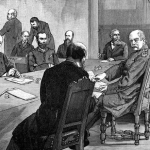Ethiopia is Africa’s oldest independent state and one of two African countries that avoided colonial rule. The country was however occupied by Italy in the 1930s, forcing the Emperor Haile Selassie to flee. Haile Selassie was only able to return after British and Ethiopian forces expelled the Italian army in the course of World War II (Council on Foreign Relations).
Ethiopia hosts the African Union (AU) and is one of the world’s largest troop contributor to U.N. peacekeeping operations. Agriculture accounts for 70% of employment and a third of GDP. Coffee is the country’s largest export. The hydroelectric project, the Grand Ethiopian Renaissance dam, is Africa’s largest hydroelectric power project. Once completed, it would allow Ethiopia to export electricity to its neighbors (US Congressional Research Service).
Natural resources that make a significant contribution to the economy include gold (At least a million people are estimated to be employed in gold mining), platinum, copper, potash, natural gas and (as stated above), hydropower. However, in 2015, Ethiopia played a significant role in the world’s production of pumice, pumicite and tantalum (USGS Minerals Yearbook; Central Intelligence Agency World Factbook).


Thank you for your kind messages. We appreciate you visiting our blog and look forward to any other things you may find.
Keep on working, great job!